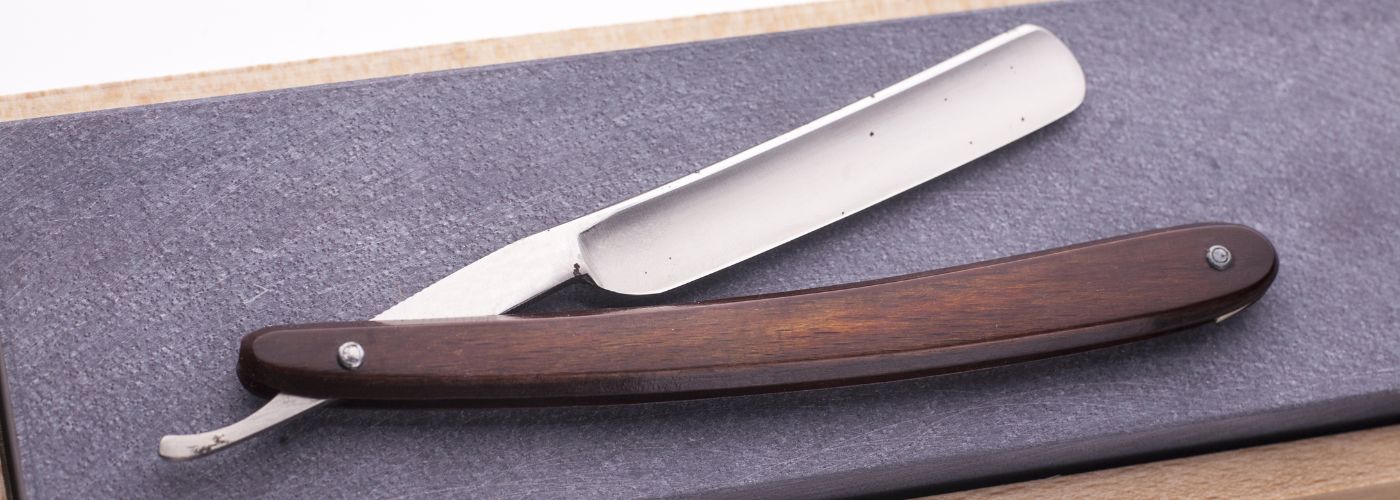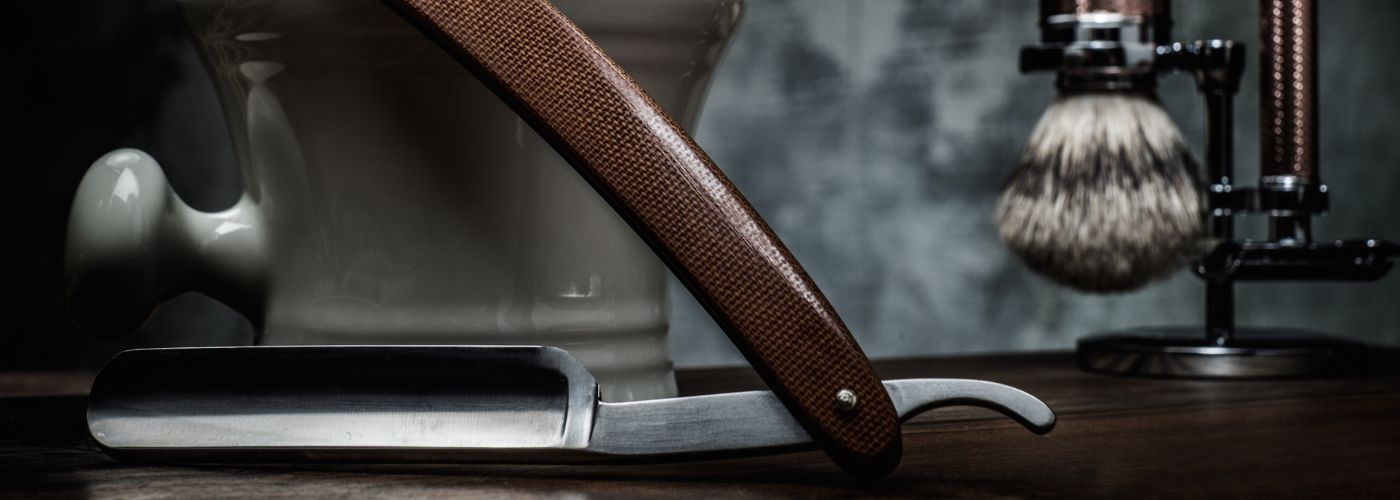Using a straight razor is one of the best tools any barber can use to get the sharpest, cleanest, and finest lines and edges for their client. While using a straight razor may seem like a scary thing to due because of the risks involved, you shouldn’t worry! We’ll be going over the best straight razor basics for barbers.
What Is A Straight Razor?
A straight razor is a shaving razor with a long, sharp blade that can fold into its handle. It is also called a cutthroat razor. Straight razors have been used for centuries and are still popular among many barbers.
The biggest advantage of using a straight razor is that it provides a very close shave. The blade can be positioned at the perfect angle to get a close shave without irritating the skin. Straight razors also last longer than disposable razors and must only be honed and stropped occasionally to keep them sharp. A razor sharpening service can help anyone that doesn’t have the right tools to sharpen their razor.
There are some disadvantages to using a straight razor, however. They require more skill and practice than disposable razors, so it takes some time to learn how to use them properly. If not used carefully, they can easily cause cuts and nicks in the skin.
Is A Straight Razor Better?
There are a lot of benefits and risks to using a straight razor. The straight razor folds itself onto the blade handle. This means that the blade is always exposed, making it dangerous to use if you’re not careful. On the other hand, many people believe that the benefits of a straight razor outweigh the risks.
So, what are the advantages of using a straight razor? For starters, straight razors provide a closer shave than safety razors. This is because the blade is much sharper and can cut through hair more easily. Additionally, straight razors can help you avoid ingrown hairs and razor burns.
If you’re thinking about switching to a straight razor, there are some things you should keep in mind. First, you’ll need to invest in a good-quality razor and learn how to sharpen and hone it properly.
Second, you must learn how to use it properly. Improper use can lead to deep cuts and knicks on the skin.
How To Hold A Straight Razor
A straight razor is a traditional shaving tool that can provide a close, comfortable shave. However, it takes some practice to master the proper technique. Here are some tips for how to hold a straight razor:
The first step is to find the right grip. The most common grip is called the “pencil grip,” and it involves holding the razor like you would hold a pencil. Alternatively, you can try the “choke grip,” which involves holding the razor closer to the blade.
Once you have found a comfortable grip, it’s important to keep your hand and wrist steady while you shave. Use your other hand to stretch your skin taut, and shave with light, gentle strokes.
With practice, you can get a close shave with a straight razor.
Be sure to pick the best razor type for your skin. If you have sensitive skin, then a coarse razor blade is not the best choice for you.
Lastly, use the best shaving soap or cream to accompany your shaving ritual.
How To Sharpen A Straight Razor
A straight razor is a grooming tool that can give you a very close shave if used correctly. If you’re considering using a straight razor, it’s important to know how to sharpen it properly. Here are some tips on how to sharpen your straight razor:
1. Start with a clean razor. Before you start sharpening your razor, make sure it’s clean and free of any dirt or debris. This will help the sharpening process go more smoothly.
2. Use a honing stone. A honing stone is specifically designed for sharpening straight razors. Wet the stone with water before use and sharpen the razor in long strokes along the length of the blade.
3. Use a strop. A strop helps to remove any burrs from the blade and also hones the edge of the razor.
Overall, keep all of these tips in mind when learning how to use or sharpen your straight razor. A straight razor is the best barber tool anyone professional barber can have in their barber supply arsenal.




